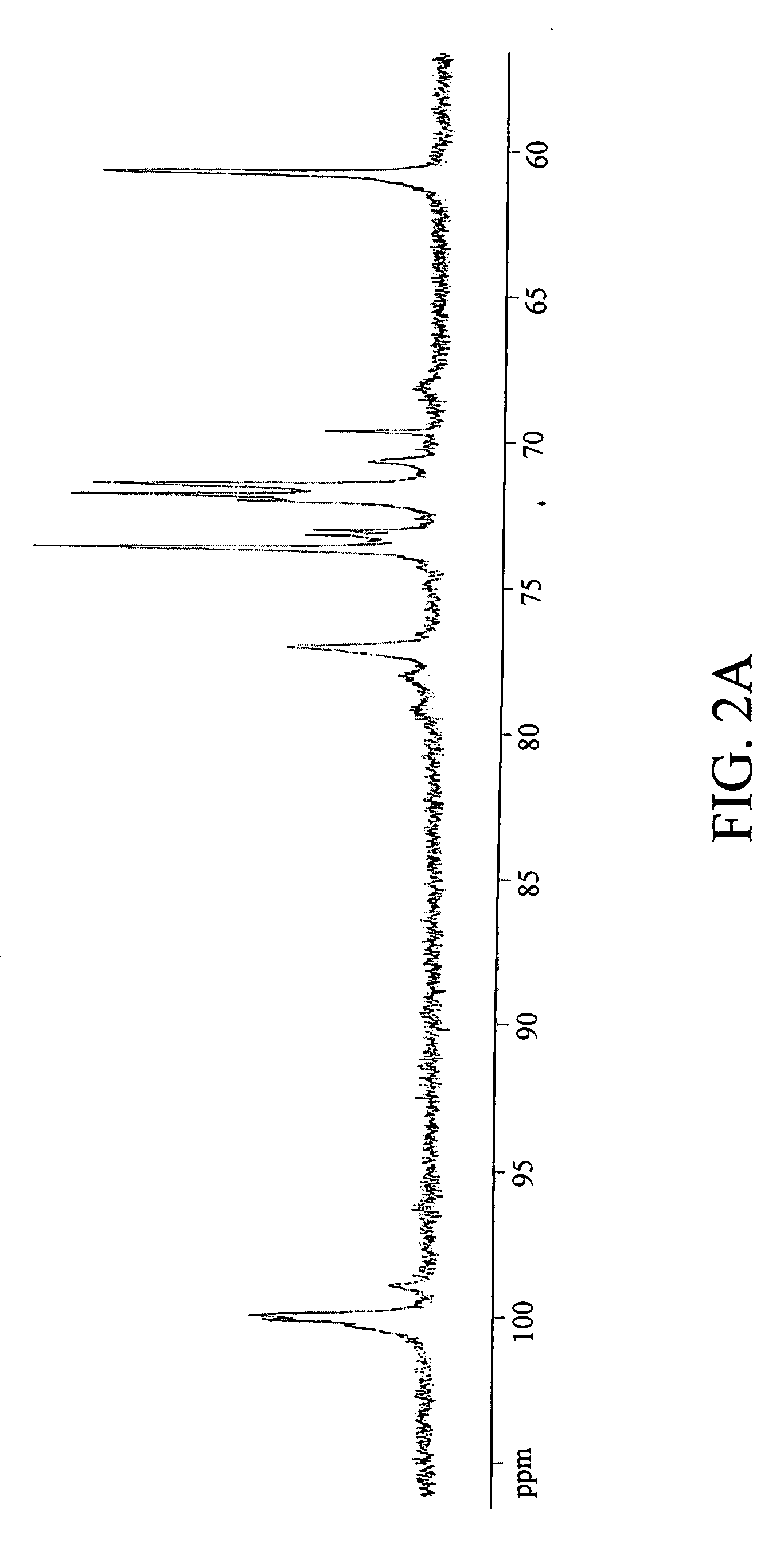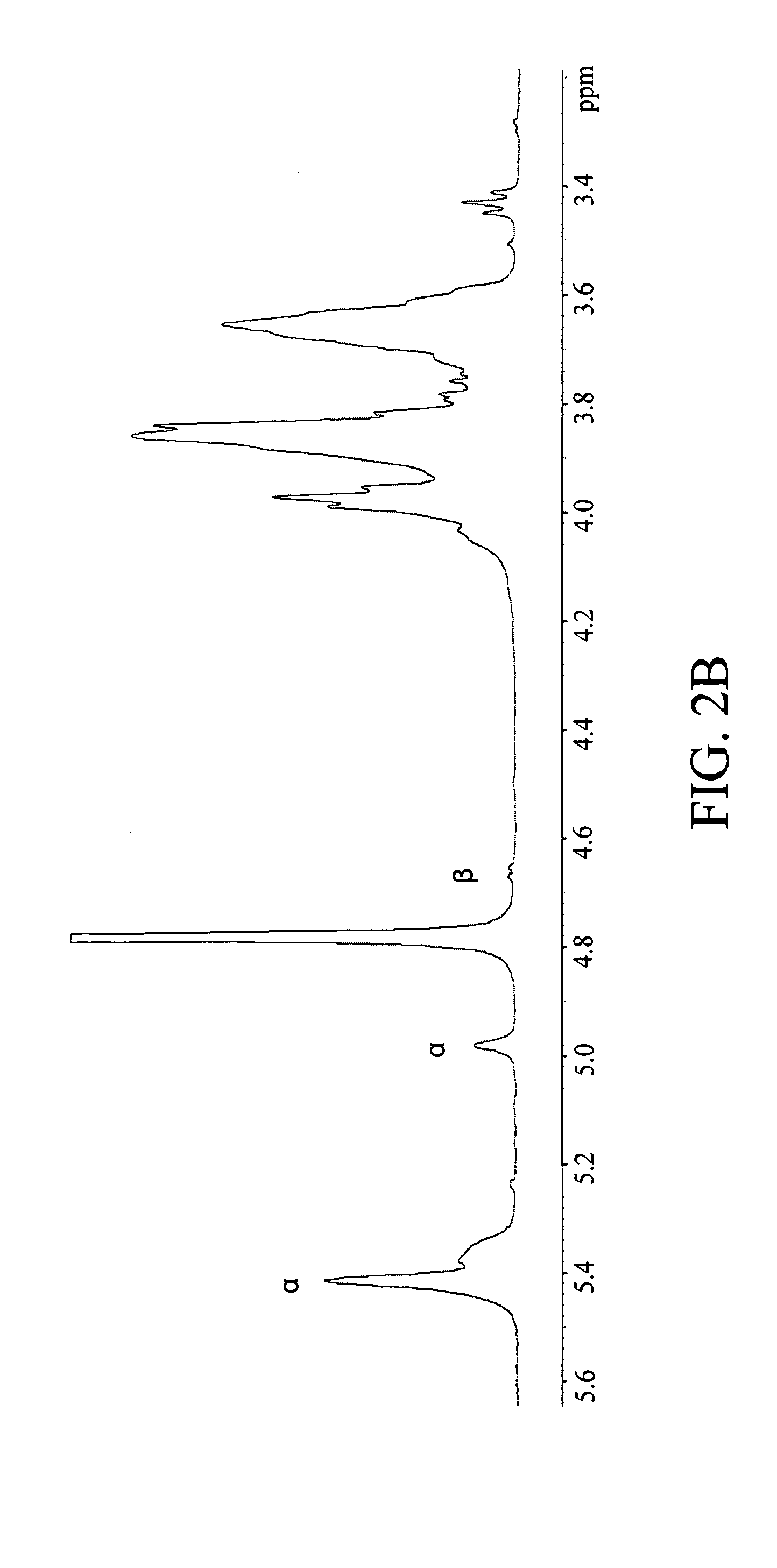Materials and methods for immune system stimulation
a technology of immune system and material, applied in the field of immune system stimulation materials and methods, can solve the problems of not always eliciting the immune response necessary to achieve a therapeutic effect, failure to elicit cellular responses, anaphylactic shock,
- Summary
- Abstract
- Description
- Claims
- Application Information
AI Technical Summary
Benefits of technology
Problems solved by technology
Method used
Image
Examples
example 1
Characterization of RR-1
[0142] The results of the glycosyl composition and linkage analyses corroborated with initial findings and the 13C NMR spectral data on the carbohydrate composition of RR1. The glycosyl composition analysis showed glucose as the only component in RR1 while linkage analysis revealed three types of glucopyranosyl residues corresponding to three types of linkages: 4-linked glucopyranosyl residue (80%), 4,6-linked glucopyranosyl residue (12%) and terminal glucopyranosyl residue (8%). The 13C NMR spectra (FIG. 2A) showed well resolved signals for the carbon atoms in the glucopyranosyl moieties-C1 (δ 99.97 ppm), C2 (δ 73.68 ppm), C3 (δ 71.89 ppm), C4 (δ 77.09 ppm), C5 (δ 69.67 ppm) and C6 (δ 60.83 ppm). The downfield shifts in the C1 and C4 signals confirm the (1→4) linkage while the signal at δ 71.53 ppm may be due to the C6 of the (1→6) linkage. The signals at δ 5.44 ppm (not well resolved) and that at δ 5.00 ppm in the 500 MHz protonNMR spectra (FIG. 2B) are du...
example 2
Non-Cytotoxic / Cell Proliferation Effect
[0143] The results of the MTT assay displayed in FIGS. 4A and 4B show that RR1 has no direct cytotoxic or cell proliferating effect, either on normal lymphocytes or on tumor cell lines (CEM and CEM / VLB) at concentrations as high as 1000 μg / ml.
example 3
Lymphocyte Activation
[0144] Lymphocytes are the key effecter cells of the mammalian immune system and these studies show that the different subpopulations of lymphocytes are activated by RR1 at varying levels. B cells are activated by 39%, T cells by 102% and NK cells 331% with 100 μg / ml of RR1 (FIG. 5). The >3 fold activation of NK cells is of high significance, as NK cells are the main effecters of the innate immune system that comes into contact with antigens / mitogens before antibody production and recognition by the adaptive immune system. The increased activity of NK cells by RR1 is quite evident from the results of the functional cytotoxic assay, shown in FIG. 6. RR1-treated normal lymphocytes were able to kill a higher percentage of tumor cells compared to untreated cells and a dose-dependent enhancement of cytotoxicity of activated lymphocytes was evident.
PUM
| Property | Measurement | Unit |
|---|---|---|
| molecular mass | aaaaa | aaaaa |
| concentrations | aaaaa | aaaaa |
| concentration | aaaaa | aaaaa |
Abstract
Description
Claims
Application Information
 Login to View More
Login to View More - R&D
- Intellectual Property
- Life Sciences
- Materials
- Tech Scout
- Unparalleled Data Quality
- Higher Quality Content
- 60% Fewer Hallucinations
Browse by: Latest US Patents, China's latest patents, Technical Efficacy Thesaurus, Application Domain, Technology Topic, Popular Technical Reports.
© 2025 PatSnap. All rights reserved.Legal|Privacy policy|Modern Slavery Act Transparency Statement|Sitemap|About US| Contact US: help@patsnap.com



